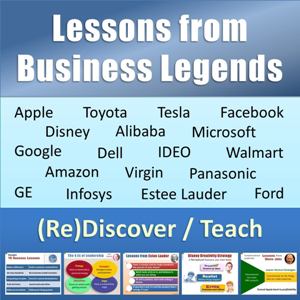| |
|
Success Story of an innovative
financial services firm
Charles Schwab
|
|
 |
|
Charles
Schwab's Cause
To
be the most ethical and useful
financial services company
in the world.
|
 |
I feel
good every day about helping people
invest; helping them achieve
financial independence. |
Charles
Schwab |
|
|
|
1963
Charles Schwab and two other partners launch
Investment Indicator, an investment advisory
newsletter. At its height, the newsletter has
3000 subscribers, each paying $84 per year to
subscribe.
1971
Charles establishes First Commander Corp., a
traditional brokerage, with $100,000 borrowed
from his entrepreneurial uncle, Bill Schwab.
1973
Charles buys out his other partners, assuming
all of the company's debt. He changes First
Commander's name to Charles Schwab & Co., Inc.
1974
The SEC mandates a 13-month trial period for the
deregulation of certain brokerage transactions.
While many brokerages take the opportunity to
raise commissions, Charles seizes the
opportunity to create a new kind of brokerage, a
discount broker and pitchman is born.
1975
SEC officially approves "negotiated"
commissions, marking the birth of the discount
brokerage industry. The Pacific Coast Stock
Exchange approves Schwab's membership.
1976
First ads feature Charles in shirt-sleeves: the
Schwab brand is born. Early foray into high-tech
innovation: Bunker Ramo System 7, begins
delivering stock quotes to customers. Options
Clearing Corp. membership approved. First branch
opens. By 1979 it brags of 33,000 customers.
|
|
|
|
|
1983
Bank of America officially acquires Schwab for
$57 million. Company opens up 500,000th customer
account.
1984
Launches Mutual Fund MarketPlace with 140
no-load funds as well as three new online
products: SchwabQuotes, Financial Independence
and The Equalizer – an application that would
point the way toward an online future.
1985
Introduces Equalizer online investing software
and SchwabQuotes touch-tone quote system.
Launches standalone Financial Independence
software for managing personal finances on the
PC.
1986
Abandons Financial Independence product for lack
of fit with core brokerage business.
1987
Completes management-led buyback from Bank of
America for $280 million. In September, The
Charles Schwab Corporation (the parent
corporation) completes IPO. In October, the
stock market crashes, exposing Schwab to
critical margin exposure.
1988
Advisor Source, partnership with independent
investment advisors takes off. The early
day-traders: a 900 number hawks news and tips to
trading junkies.
1989
Telebroker replaces Schwab Quotes; introduces
touch-tone trading and quote system.
1990
Opens Indianapolis call center.
|
|
| |
1991 Acquires
Mayer & Schweitzer, one of
nation's premier OTC market
makers, now known as Schwab
Capital Markets LP. Introduces
Schwab 1000 Index Fund, along
with Schwab U.S. Government Bond
Fund. Opens call center in
Denver. Holds its first national
conference for independent
investment managers. Launches
first network television
advertising campaign. Branches:
158
|
|
Financial
Innovation
BAAS
Innovative
Financial Services
Disruptive
Financial Services |
|
|
|
|
1992
Introduces no-transaction fee Mutual Fund
OneSource service. Adds Schwab California and
National Tax-Free Bond Funds. Opens call center
in Phoenix. The Charles Schwab Corporation
establishes Charles Schwab Trust Company. Opens
Latin American Center in Miami. Surpasses two
million active investor accounts.
1993
StreetSmart online trading system replaces
Equalizer.
1994
Schwab reaches $1 billion in revenues and $100
billion in customer assets. Decentralization of
the company into nine customer enterprises.
1995
Schwab commits to moving enterprise to
Electronic Brokerage.
1996
Internet trading launched. Company introduces
e.Schwab. You want some advice? Schwab pitches
Select List, its top mutual fund picks.
1997
The Charles Schwab Corporation (SCH) is added to
S&P 500 Index. E.Schwab and Schwab retail merge
back together, one price for Web trades. Opens
one-millionth online account. Creates Charles
Schwab Europe as well as subsidiaries in Hong
Kong and Cayman Islands. Forms alliance with
CS/First Boston, J.P. Morgan and Chase H&Q to
give Schwab customers access to IPOs. Introduces
Mutual Fund Report Cards and $29.95 commission
for online equity trades up to 1000 shares.
Branches: 272
|
|
| |
|
1998
Giant on the Web. Schwab passes
Merrill Lynch in total Stock
Market capitalization. Schwab
hits 1.8 million online
accounts. Full-service firms
firms play catch-up with me-too
offerings.
1999
The former discounter goes
upscale with U.S. Trust.
Preaches asset allocation,
diversification and other
investing. Reaches over $700
billion in assets; almost $4
billion in revenues.
2000
Schwab reaches $1 trillion in
assets. Acquires Cybercorp
(later renamed CyberTrader).
Enters into global financial
services alliance with AOL Time
Warner. Branches: 384.
|
|
|
| |
|
2001
Dotcom meltdown forces Schwab
into major layoffs and
examination of its
transaction-based business
model.
2002
Further consolidation forces
shut down of Schwab operations
in Australia and Japan.
2004
Charles Schwab operates 236
domestic branch offices in 43
states. The Group acquired
SoundView Technology Group, Inc.
Charles Schwab sold its Capital
Market business to UBS.
2011
The company serves 7.9 million
client brokerage accounts, with
$1.65 trillion in assets, from
over 300 offices in the U.S, one
office in Puerto Rico, and one
branch in London.
2025
Charles Schwab (SCHW) holds a
massive amount of client assets
($12 trillion) making it one
of the world's largest financial
services firms.
|
|
|
 |
A man
can succeed at almost anything for
which he has unlimited enthusiasm. |
Charles
Schwab |
|
|